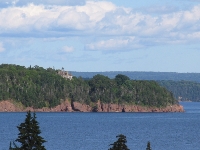Neal Stephenson’s third and final volume to the Baroque Cycle, The System of the World, is out! See this Slashdot review for a good summary of the plot, strengths, and weakness – The System of the World.
What’s with the title? The System of the World is (as we are told in the novel) the title of the third book of Isaac Newton’s Principia Mathematica. More importantly it refers to the way the world is run and the transition from a Tory system based on land, aristocracy, and slavery to a Whig system based on currency, industry and mechanical power. (See my previous entries on the earlier titles Again and The Confusion.) The trilogy could be read as the fictionalization of the birth of global scientific capitalism. Stephenson tries to dramatize (in more ways than one) the ideas at this birth. This culminates in a nice, but incomplete confrontation between Newton and Leibniz (and the character Waterhouse as the simple sceptic) that is almost a philosophical dialogue worthy of Hume, but which doesn’t, unless I have missed something, really deal with their differences.
In the end I liked the book (more than Confusion) but felt let down by the Cycle. Stephenson isn’t sure if he wants to write history, accurate historical fiction, or retro-Sci-fi that is based in history. He started so many interesting threads that then wind down in dissappointing ways, partly I suppose, because they would not be true to history if he embellished them. But, what if he had had the courage of Gibson and Sterling, who, in The Difference Engine, feel free to change history following their speculation? Stephenson doesn’t dare, even when he has set up the idea of a logic mill so carefully – it just ends up packed and sent off to Russia and we are told it will be another century before it might get implemented. (Is there a sequel coming?)
So, if he doesn’t dare alter history, why doesn’t he stick closer to it? Why does he introduce these rather useless plot props like the wizards Enoch and Solomon who just show up to tweak history in some (right) direction or to represent some age that is perfectly well represented by others. (Just what do wizards add?) Why couldn’t he have rid himself of these and just written historical fiction? Or, for that matter, plain old accessible history?
I was expecting a big bang of an ending after the thousands of pages I traversed to get there, but was dissappointed. He wasn’t able to pull off a Tolkein epic climax. He didn’t dare speculate about how things could have been different and he also didn’t dare try to weave his tale into the possible as historical romance. I sense he got so caught in the research that he ended writing history but didn’t dare leave his sci-fi audience behind so he wove in some themes as bones for them. A good editor would have helped him ditch the bones, get rid of a thosand pages, and weave all the strands into his day’s ending in November 1714.
Continue reading Stephenson: The System of the World
